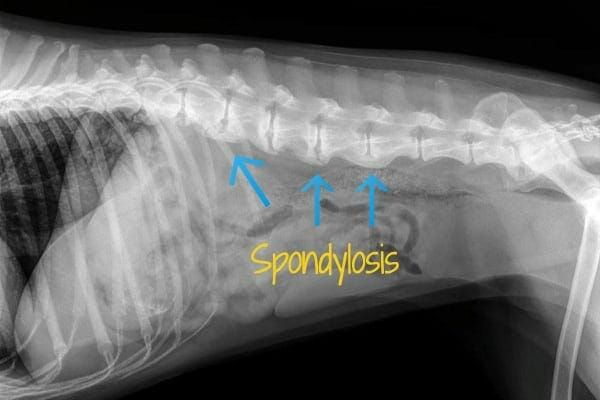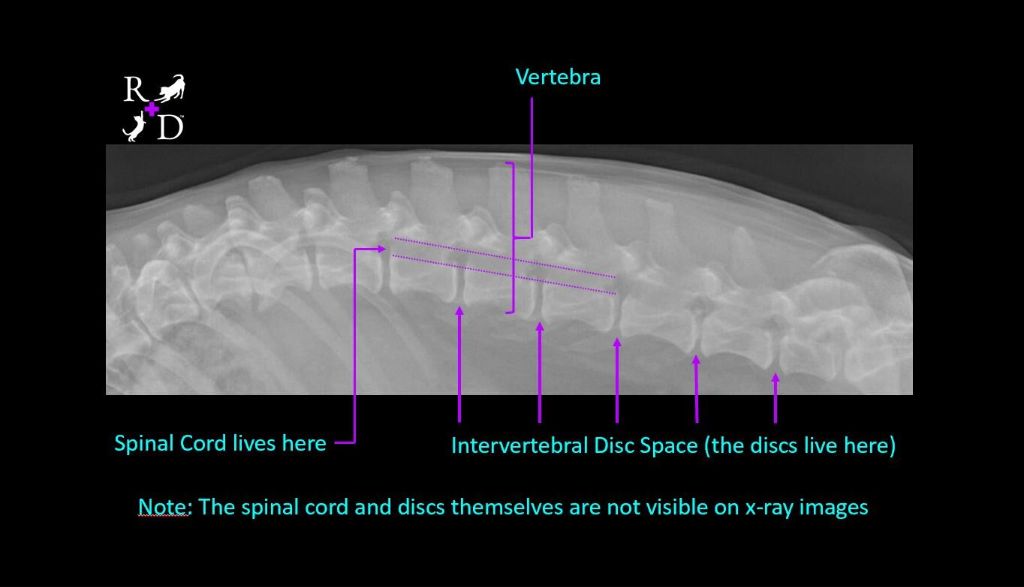What is a Pinched Nerve in Dogs?
A pinched nerve, also known as nerve compression syndrome, occurs when too much pressure is applied to a nerve by surrounding tissues such as bones, cartilage, muscles, or tendons (1). This pressure can cause pain, numbness, tingling, and muscle weakness along the pathway of the compressed nerve.
Some common symptoms of a pinched nerve in dogs include:
- Neck or back pain
- Difficulty turning the head
- Lameness or limping
- Weakness in the legs
- Muscle atrophy
Areas where pinched nerves frequently occur in dogs include the neck, shoulder, back, hips, and legs. Nerves can become pinched due to injury, intervertebral disc disease, tumors, osteoarthritis, or muscle strains (2).
(1) https://wagwalking.com/wellness/can-dogs-get-pinched-nerves
(2) https://www.bulldogology.net/pinched-nerve-in-dogs-neck/
Causes of Pinched Nerves in Dogs

There are several potential causes for pinched nerves in dogs:
Intervertebral disc disease is a common cause of pinched nerves in dogs, especially in certain breeds like Dachshunds. This occurs when the discs between the vertebrae in the spinal column rupture or herniate, putting pressure on the spinal cord and nerves. According to the Disk Disease (IVD) – Long Beach Animal Hospital, intervertebral disc disease is one of the most common diseases causing paralysis and paresis of the rear legs in dogs.
Injuries or trauma such as falls, blows, or automobile accidents can also cause pinched nerves in dogs. The impact can damage tissues surrounding the nerves, causing inflammation and nerve compression.
Bone spurs, also called osteoarthritis, can form on the vertebrae due to aging. These bony growths can press on nearby nerves and lead to pinched nerves.
Rarely, tumors or cysts on the spine can grow large enough to put pressure on the spinal cord and nerves, resulting in a pinched nerve.
Diagnosing a Pinched Nerve
If a veterinarian suspects a pinched nerve in a dog, they will perform a thorough physical and neurological exam. The physical exam involves palpating the spine and joints, assessing pain levels, and checking for reluctance to turn the head or other limitations in mobility. The neurological exam evaluates reflexes, muscle tone, and whether any limbs are weak or uncoordinated.
Diagnostic tests like X-rays can also be used to aid in diagnosis. X-rays allow the veterinarian to visualize the vertebrae and discs to check for evidence of disc herniation or bone spurs that could be pinching the spinal nerves. However, not all pinched nerves will show up on X-rays. Advanced imaging such as MRI or CT scans can provide more definitive diagnosis by allowing a detailed view of the spinal cord and nerve roots. Electromyography may also be used to measure electrical activity in muscles and peripheral nerves. But for most straightforward pinched nerve cases, a physical exam combined with X-rays provides sufficient evidence for diagnosis.
Ultimately, the clinical signs and neurolocalization, along with results from diagnostic imaging tests, will enable the veterinarian to confirm whether a dog is suffering from a pinched nerve.
Can an X-Ray Show a Pinched Nerve in Dogs?
While X-rays can be useful in diagnosing some conditions, they have limitations in detecting pinched nerves in dogs (Symptoms of a Pinched Nerve in a Dog’s Neck). X-rays are often done initially as part of the diagnostic process, but they may not clearly show a pinched nerve or identify the exact location of nerve compression.

X-rays are helpful for ruling out other issues like fractures or arthritis that could be causing your dog’s symptoms. However, they have low sensitivity for soft tissue abnormalities like disc herniations or nerve impingement.
Other advanced imaging techniques like CT scans, MRIs, or myelograms are usually needed to confirm a pinched nerve diagnosis and pinpoint the location. These modalities allow vets to see more detail of the spinal cord and surrounding structures.
While X-rays alone may suggest a pinched nerve based on things like narrowing of the spinal canal, other tests are required to confirm compression or damage to the spinal cord or nerves. Your vet may recommend starting with X-rays but following up with CT, MRI, or other imaging for a more definitive diagnosis.
Pinched Nerve Treatment
Treatment for a pinched nerve in dogs focuses on relieving pain and inflammation while allowing the nerve time to heal. Some common treatments include:
Rest and restriction: The veterinarian will likely recommend restricting your dog’s movement and activity to allow the area to rest and heal. This may involve crate rest, limiting walks and playtime, and avoiding activities like jumping or using stairs. Allowing the area to rest is key to recovery.
Medications: Anti-inflammatory medications like corticosteroids can help reduce swelling and inflammation around the pinched nerve. Pain medications like tramadol may also be prescribed to relieve nerve pain. These medications provide relief while the nerve heals. According to https://www.bulldogology.net/pinched-nerve-in-dogs-neck/, physical therapy techniques can also help restore mobility and strengthen the affected area.
Surgery: In severe cases where the pinched nerve does not respond to more conservative treatment, surgery may be needed. This involves surgically relieving the pressure on the pinched nerve. Surgery carries risks and is usually only considered if other treatments fail.
With appropriate treatment and rest, many pinched nerves in dogs can heal within a few weeks. Close collaboration with your vet is key to ensure the proper treatment plan for your dog’s nerve injury.
Recovery and Outlook
The recovery time for a pinched nerve in dogs depends on the severity and location of the pinched nerve. More severe pinches or complete nerve damage will take longer to heal. In mild cases, symptoms may start improving within a few days or weeks. More severe cases can take 6-8 weeks or longer for the dog to regain normal functioning.
Physical therapy is often a critical part of recovery and can help improve outcomes. Common physical therapy techniques include massage, stretching, range of motion exercises, cold laser therapy, therapeutic ultrasound, and hydrotherapy. These help reduce inflammation, improve circulation, and strengthen muscles around the affected area. A veterinary rehabilitation specialist can create a customized therapy plan. Consistent physical therapy can aid nerve healing and help the dog regain mobility and strength (Source).
With appropriate treatment, most dogs with pinched nerves will make a full recovery over time. However, in some cases, there may be permanent nerve damage that limits mobility. Dogs with severe, chronic pinched nerves may struggle with lifelong effects like weakness, numbness, or pain. But with lifestyle adjustments to accommodate the injury, dogs can often live happily despite some lingering effects. Catching and treating pinches early leads to the best prognosis. Regular vet checkups and prompt treatment when symptoms appear is key to minimize the impact on the dog’s nerves and quality of life (Source).
Preventing Pinched Nerves
There are several things dog owners can do to help prevent their dog from developing a pinched nerve.
Maintaining a healthy weight is important. Overweight dogs put more pressure on their joints and spine, increasing their risk for nerve compression issues. Keeping your dog at an optimal weight takes stress off the vertebrae and discs.
Providing proper nutrition with quality proteins, healthy fats, and antioxidants supports nerve health. Certain supplements like glucosamine and chondroitin may also help. Consult your vet for diet and supplement recommendations.
Low-impact exercise like leash walks, swimming, or gentle stretching and massage can strengthen muscles and increase flexibility without added stress. Avoid high-impact activities that require jumping or quick pivoting.
Regular veterinary checkups to monitor weight, joint health, and nerve function are also beneficial. Early intervention for any underlying conditions can prevent further damage.
With preventative care, pinched nerves may be avoidable. However, some dogs have conformational or genetic predispositions. Work closely with your veterinarian if you suspect your dog is at higher risk.
Living with a Dog with a Pinched Nerve
Living with a dog that has a pinched nerve requires some ongoing management and lifestyle adjustments. While the underlying cause of the pinched nerve may have been treated, dogs that experience this condition are prone to recurrences. As an owner, you’ll need to monitor your dog closely to watch for any returning signs of nerve pain or dysfunction.

It’s important to follow any at-home treatment plans from your veterinarian, such as providing anti-inflammatory medication on a regular schedule. You may also need to restrict your dog’s movement and activities to prevent further nerve irritation. For example, avoiding activities like jumping, running, and playing fetch can help. Your vet may suggest confining your dog to a crate or small room when unattended.
Ensuring your dog maintains a healthy weight is also key, as excess weight can put more pressure on the spine and nerves. Providing an orthopedic dog bed and limiting use of stairs or furniture can reduce nerve compression.
Check in regularly with your veterinarian to monitor for any recurring signs like limping, muscle weakness, or pain. Prompt treatment is important if the pinched nerve flares up again. With proper ongoing care and lifestyle adjustments, dogs can manage pinched nerves and enjoy a good quality of life.
When to See a Vet
If your dog is showing signs of a pinched nerve, it’s important to take them to the vet as soon as possible. Some symptoms require immediate vet attention:
- Loss of bladder or bowel control
- Paralysis in any part of your dog’s body
- Significant muscle weakness or tremors
- Sudden severe neck pain
These symptoms could indicate severe nerve damage requiring rapid veterinary intervention. Don’t wait to see if symptoms improve on their own, as delaying treatment risks permanent injury.
Even if your dog has milder pinched nerve symptoms, it’s still a good idea to have them examined by a vet. The vet can confirm the diagnosis, identify the location of the pinched nerve, and prescribe any necessary treatment or medications. Regular recheck appointments allow the vet to monitor your dog’s recovery and watch for any new or worsening symptoms.
While pinched nerves sometimes resolve on their own, veterinary oversight helps ensure your dog heals properly. Don’t neglect routine vet monitoring during the recovery period. Careful follow-up is key to preventing reinjury and restoring your dog to full mobility and comfort.
Pinched Nerve FAQs
Here are answers to some frequently asked questions about pinched nerves in dogs:
What are the most common symptoms of a pinched nerve in a dog?
The most common symptoms of a pinched nerve in dogs include pain, muscle spasms, lameness, stiffness, weakness, and tingling or numbness in the affected area. You may notice your dog crying out, reluctance to move or difficulty moving, trembling, and abnormal posture like arching the neck or keeping the head low.[1]
How long does it take a pinched nerve to heal in a dog?
With proper treatment, mild pinched nerves in dogs may heal within 2-4 weeks. More severe pinched nerves can take 6-8 weeks or longer to fully recover. Restricting activity, physical therapy, medication, and sometimes surgery are used to treat pinched nerves and promote healing.[2]

Can a pinched nerve paralyze a dog?
In very severe cases, a severely pinched or damaged nerve can cause partial paralysis in the affected leg or body region. However, this is relatively rare, as most pinched nerves only cause pain, numbness, and weakness vs complete loss of function or paralysis.[1]
How is a pinched nerve diagnosed in dogs?
A veterinarian will diagnose a pinched nerve through a physical exam, neurological assessment, and diagnostic tests like x-rays, CT scan, MRI, or nerve conduction tests. Bloodwork may also be done to rule out other conditions causing the symptoms.
Can a dog fully recover from a pinched nerve?
Yes, with proper treatment most dogs make a full recovery from a pinched nerve within several weeks. In some cases, there may be lingering minor symptoms, but the vast majority of dogs regain normal nerve function and mobility once the pinched nerve is resolved.
[1] https://pethelpful.com/dogs/Symptoms-of-a-Pinched-Nerve-in-a-Dogs-Neck
[2] https://wagwalking.com/wellness/can-dogs-get-pinched-nerves
